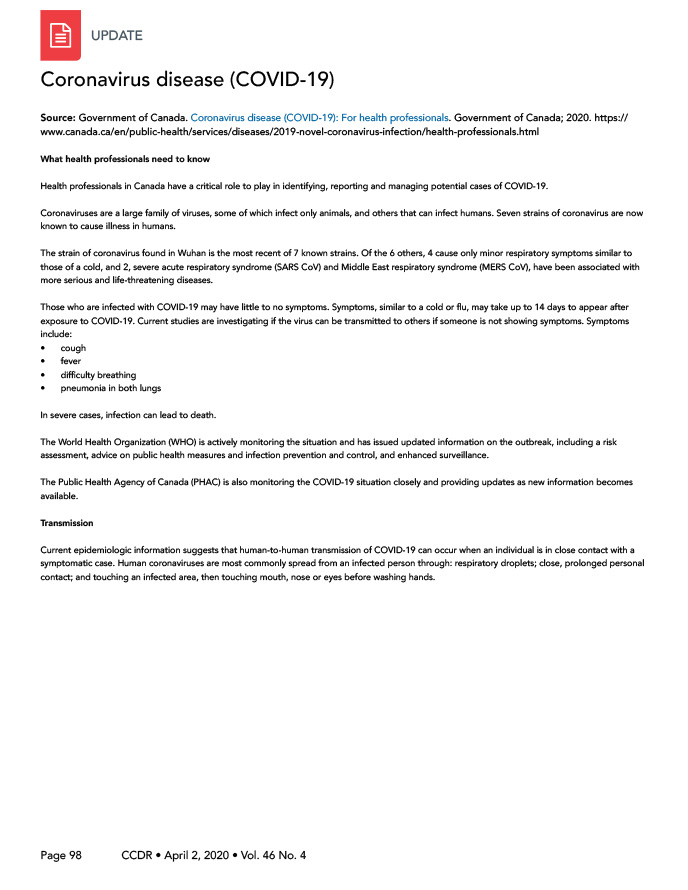COVID-19

 Download this article as a PDF
Download this article as a PDFPublished by: The Public Health Agency of Canada
Issue: Volume 46–4: Respiratory syncytial virus (RSV)
Date published: April 2, 2020
ISSN: 1481-8531
Submit a manuscript
About CCDR
Browse
Volume 46–4, April 2, 2020: Respiratory syncytial virus (RSV)
Update
Coronavirus disease (COVID-19)
Source: Government of Canada. Coronavirus disease (COVID-19): For health professionals. Government of Canada; 2020.
What health professionals need to know
Health professionals in Canada have a critical role to play in identifying, reporting and managing potential cases of COVID-19.
Coronaviruses are a large family of viruses, some of which infect only animals, and others that can infect humans. Seven strains of coronavirus are now known to cause illness in humans.
The strain of coronavirus found in Wuhan is the most recent of 7 known strains. Of the 6 others, 4 cause only minor respiratory symptoms similar to those of a cold, and 2, severe acute respiratory syndrome (SARS CoV) and Middle East respiratory syndrome (MERS CoV), have been associated with more serious and life-threatening diseases.
Those who are infected with COVID-19 may have little to no symptoms. Symptoms, similar to a cold or flu, may take up to 14 days to appear after exposure to COVID-19. Current studies are investigating if the virus can be transmitted to others if someone is not showing symptoms. Symptoms include:
- cough
- fever
- difficulty breathing
- pneumonia in both lungs
In severe cases, infection can lead to death.
The World Health Organization (WHO) is actively monitoring the situation and has issued updated information on the outbreak, including a risk assessment, advice on public health measures and infection prevention and control, and enhanced surveillance.
The Public Health Agency of Canada (PHAC) is also monitoring the COVID-19 situation closely and providing updates as new information becomes available.
Transmission
Current epidemiologic information suggests that human-to-human transmission of COVID-19 can occur when an individual is in close contact with a symptomatic case. Human coronaviruses are most commonly spread from an infected person through: respiratory droplets; close, prolonged personal contact; and touching an infected area, then touching mouth, nose or eyes before washing hands.
